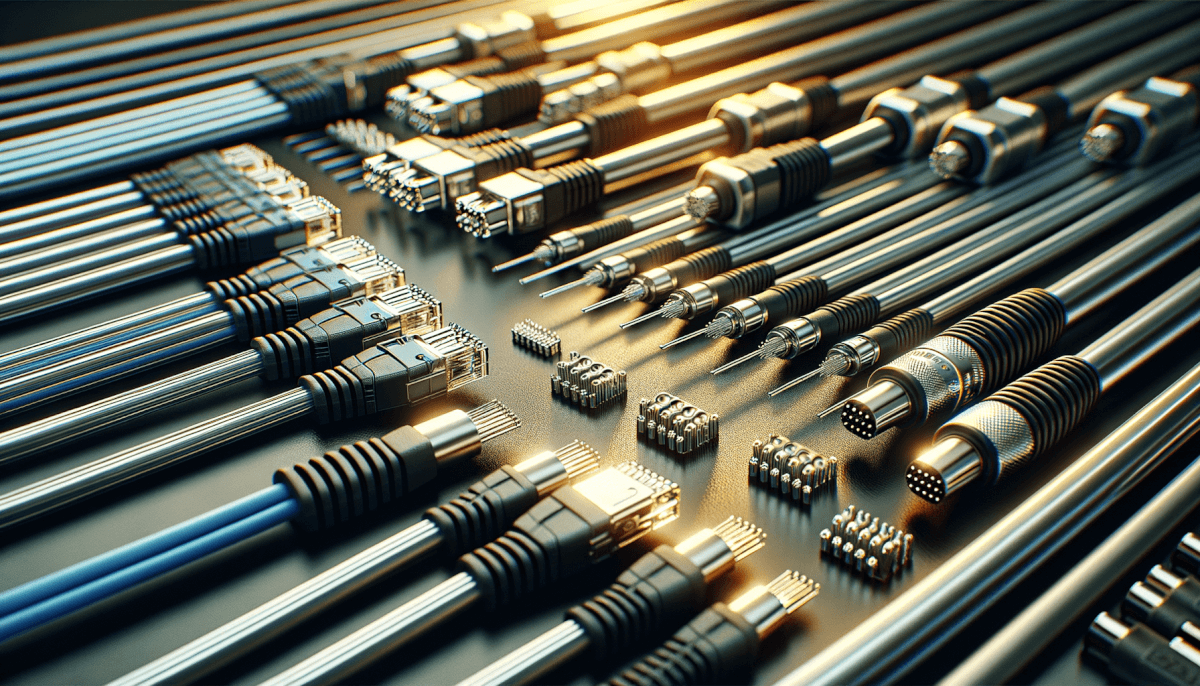From The Telegraph To Fibre Optics: How Data Cabling Revolutionised Communication TechnologyCREATED BY LISA TAYLOR
Published: 08/08/2024 @ 15:25PM The world of communication has undergone a remarkable transformation over the years. It has changed from the days of the telegraph to the lightning-fast speeds of fibre optics. This evolution has been made possible by advancements in data cabling. Data cabling has played a crucial role in shaping the way we connect and communicate with each other. We will explore how it has revolutionised communication technology. Data cabling maze, Wires intertwine endlessly, Digital highway Communication has always been an integral part of human society. Throughout history, we have witnessed various breakthroughs in technology. These innovations have revolutionised the way we connect and communicate with one another. From the invention of the telegraph in the 19th century to the introduction of fibre optics in the late 20th century, the evolution of communication technology has been remarkable. At the heart of this evolution lies data cabling. Data cabling, also known as structured cabling, refers to the infrastructure of cables, wires and other hardware components. These elements transmit data and information between devices. It serves as the backbone of our communication networks. This infrastructure allows us to send and receive data at lightning-fast speeds. But how did data cabling come into existence? How has it contributed to breakthroughs in communication technology? The telegraph, invented by Samuel Morse in 1837, was the first form of electrical communication. It used a series of wires and electrical signals. These transmitted messages over long distances. This laid the foundation for data cabling. It was the first time that wires were used to transmit information. As technology advanced, data cabling evolved. The introduction of the telephone in 1876 marked a significant change. The telephone required a more sophisticated cabling system. It needed to transmit both voice and data signals. This led to the development of twisted-pair cabling. The next significant breakthrough in communication technology came with the invention of the radio in the late 19th century. This required a new type of cabling known as coaxial cabling. Coaxial cabling transmitted radio signals over long distances. It became the standard for transmitting data and information. This continued until the late 20th century when fibre optics emerged. Fibre optics use thin strands of glass or plastic to transmit data with light. This technology revolutionised communication. It allowed for faster and more reliable data transmission over long distances. As a result, we can connect with people from around the world in real time. At the core of this technology lies data cabling. Specifically, it is fibre optic cabling. Fibre optic cabling consists of thin strands of glass or plastic, known as optical fibres. These fibres transmit data using light signals. The cables are designed to carry large volumes of data at incredibly high speeds. This makes fibre optics the preferred choice for long-distance communication. Additionally, they are immune to electromagnetic interference. This quality makes them more reliable than traditional copper cables. Data cabling is not limited to telecommunication. With the rise of the internet, data cabling has become increasingly important in connecting the world. The internet relies heavily on data cabling, especially fibre optics, to transfer data between servers and devices. In fact, over 99% of all international data is transmitted through fibre optic cables. In recent years, data cabling has evolved significantly. The introduction of wireless communication technology has played a key role. Wireless data cabling, also known as Wi-Fi, uses radio waves. It transmits data between devices without the need for physical cables. This innovation has revolutionised communication methods. We can connect to the internet and to each other. We are no longer constrained by cables. Data cabling has played a significant role in the evolution of communication technology. From the telegraph to fibre optics, it has served as the backbone of our communication networks. It enables us to connect and communicate with each other in ways that were once unimaginable. As technology continues to advance, data cabling will remain crucial. It will shape how we communicate in the future. Until next time ... LISA TAYLOR
Call/WhatsApp: +447908230661
Share the blog love ... | | #datacabling #communications #technology #evolution #fibreoptics |
About ... | Lorem ipsum dolor sit amet, consectetur adipiscing elit. Nunc ornare augue felis, vel tempor sapien laoreet sit amet. Vestibulum ante ipsum primis in faucibus orci luctus et ultrices posuere cubilia curae; Nunc congue non enim a congue. Aliquam erat volutpat. Aliquam id varius odio, a tempor lectus. Aliquam pellentesque turpis sem, vel gravida libero dignissim ac. In blandit risus sit amet purus dapibus, lacinia ultricies ex vehicula. Nulla felis dui, convallis ut tellus vel, tempor tincidunt mi. Quisque porttitor vestibulum felis, at pulvinar erat convallis dignissim. Quisque sed mi ut leo tincidunt ullamcorper. Suspendisse id ante arcu. Donec eget felis lacinia, accumsan lectus at, luctus tellus. Proin aliquam, metus interdum tristique lacinia, purus nisl consectetur tortor, at faucibus ante felis sit amet augue. Suspendisse potenti. Fusce ornare augue id leo laoreet, nec convallis velit aliquet 💗 |
More blog posts for you to enjoy ... | | | | 
| | Unlocking the Full Potential of Your Office: Data Cabling Benefits In today's digital age, businesses are constantly looking for ways to improve their efficiency and productivity. One often overlooked solution is the use of data cabling in the workplace. By streamlining tasks and boosting e... | 
| | The Integral Guarantee: Ensuring Data Cabling Health & Safety in the UK In today's digital age, a strong and reliable network is crucial for the success of any business. However, with the increasing use of technology comes the need for proper data cabling health & safety measures. This is wh... | 
| | Data Cabling: A Brief History of Connecting the World Data cabling has played a crucial role in connecting the world and facilitating communication. From the early days of telegraphs to the modern fibre optic technology, data cabling has evolved significantly. ... | 
| | The Importance of Data Cabling Infrastructure for Efficient Business Operations In today's digital age, data cabling has become an essential component for any business looking to stay competitive and efficient. From ensuring reliable connectivity to supporting various devices and systems, a well-designe... | 
| | Get Your Network in Optimum Condition with a Free Network Health Check As technology continues to advance, the demand for a fast and reliable network is becoming increasingly important for businesses. However, many companies overlook the importance of maintaining their network infrastructure, w... | 
| | Exploring the Limitless Potential of Fibre Optics and Data Cabling in Our Modern World In today's digital age, data is the driving force behind innovation and progress. With the increasing demand for faster and more reliable data transmission, fibre optics and data cabling have emerged as the leading solutions... | 
| | The Hidden Benefits of Cat6a Cabling: Improving Network Infrastructure in the UK In today's fast-paced digital world, having a reliable and efficient network infrastructure is crucial for businesses in the UK. Upgrading to Cat6a cabling may seem like a daunting and unnecessary task, but the benefits it o... | 
| | Innovative Cabling Solutions: Exploring Unique Uses for Data Cabling In today's digital age, data cabling is often associated with internet connections. However, there are countless other ways to use this technology to improve efficiency, organisation, and overall functionality in various ind... |
Other bloggers you may like ... | | | |
© 2020-2025 by YourPCM Limited All rights reserved
No unauthorised use, duplication, or distribution of any text, images or audio contained within the pages of this blog is permitted without prior written permission of the author.
Many elements of this blog have been created by Artificial Intelligence and should not be used as a definitive source of facts. The author is not liable or otherwise legally responsible for the consequences of decisions you make based on anything you read, see or hear on the pages of this blog. Always consult a certified professional in your country of residence.
In addition, YourPCM Limited, its directors, employees and authorised agents are similarly not liable or otherwise legally responsible either. The sblogit.com platform is provided 'as is' and by viewing this page you agree with the terms of this statement. If you do not agree, you should leave now. YourPCM Limited is incorporated in the United Kingdom and only subject to the laws of England and Wales.
Be cool, stay froody, and always remember where your towel is!
 |
|
|








